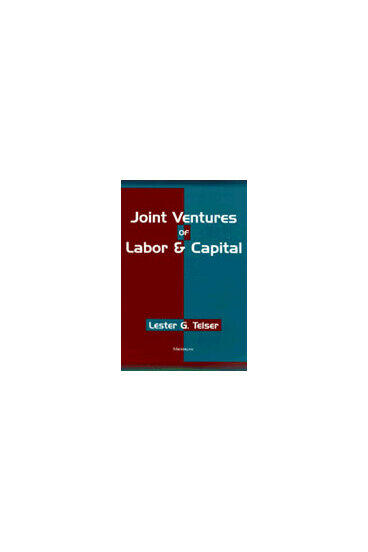Joint Ventures of Labor and Capital
Core theory sheds light on the formation and survival of joint ventures of labor and capital
Description
This original, insightful book explores how competition among coalitions for members explains which profit-seeking joint ventures of labor and capital form and can survive. The nature, direction, and control of investments by these joint ventures, the division of labor, and the determinants of wages are among the main topics. The principal approach is core theory, whose sources lie in game theory with deep roots in neoclassical economics. Core theory remains unrivaled as a tool for studying competition, especially in markets.
Lester G. Telser uses core theory to explain under what conditions a corporation, mutual fund, or cooperative can survive. He also describes, in terms of the nature and diversity of the projects, the types of investors conducive to the stability of their joint ventures. Core theory can answer several important but overlooked questions about wages. Among these are the relation between ability and wages as well as the relation between the size of a joint venture and the wage formulas conducive to its stability.
Joint Ventures of Labor and Capital will be important to teachers, researchers, and advanced students of economics. Since business practices are always in the forefront, faculties and students in business schools will have a keen interest in this book. Because of the emphasis on the subtleties of competition, it will also prove useful to students and practitioners in law and economics.
Lester G. Telser is Professor of Economics, University of Chicago.

